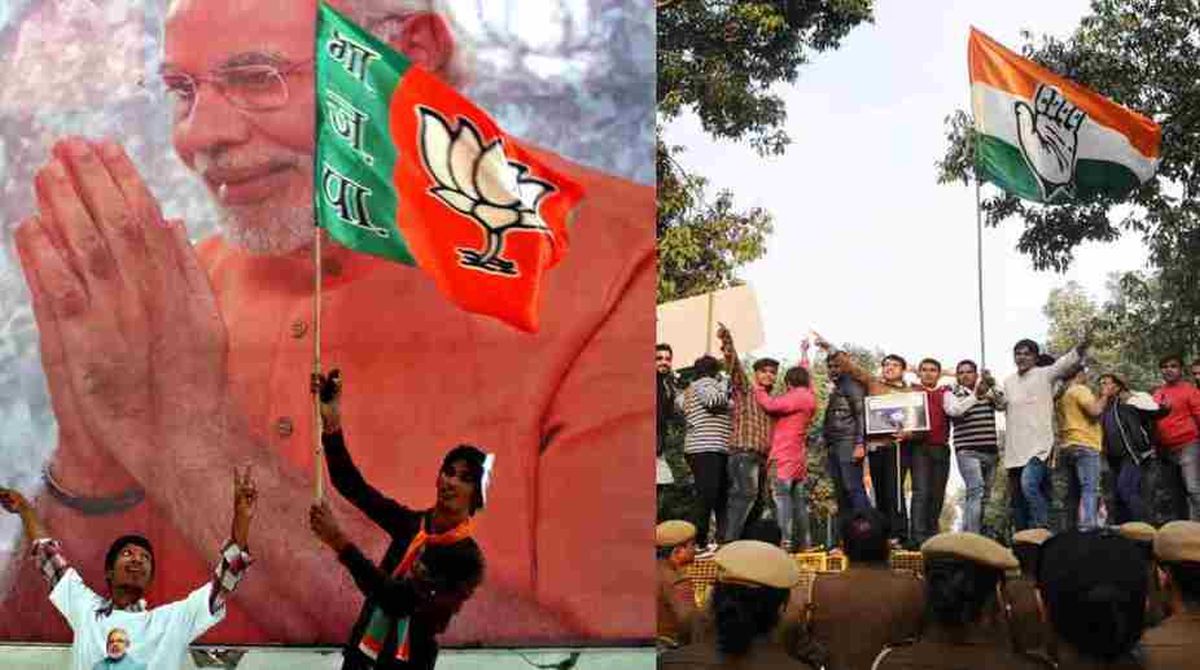BJP resorting to hooliganism fearing defeat in Delhi polls, alleges Kejriwal
The Aam Aadmi Party (AAP) has accused the BJP of unleashing violence across Delhi under police protection to intimidate AAP supporters and disrupt elections.
Last week, Congress president Rahul Gandhi put out a Facebook post inviting people to fill out a customised form to improve the party’s communications.

(Photo: Facebook/SNS)
Election 2019 will be an intense, high-stakes tussle for power like all others but with one difference in a first, it is likely to be as hotly contested in the virtual world as in the real one with parties already busy getting their social media warriors battle-ready.
Social media played a key role in propelling the BJP to power in 2014, but is set to take on a different dimension altogether in 2019 with the opposition led by the Congress getting their arsenal ready to combat the ruling party’s formidable cyber army.
Advertisement
War rooms are getting ready and thousands of volunteers being trained in data analytics and communication through digital platforms as parties, including not just the Congress and the BJP but also smaller players like the Aam Aadmi Party (AAP) and the Communist Party of India-Marxist (CPI-M), prep for the electoral battle ahead.
Advertisement
The Congress, which seems to have learnt its lessons from 2014, is scaling up its operations to challenge the BJP on a front which has been the saffron party’s forte.
The process to widen the Congress’ digital presence started a long time ago and digital war rooms have already been set up in every state, said the party’s social media department head Divya Spandana.
“We have a (social media) unit in every state and now we are going down to districts. Since it’s digital, everybody is already connected. Everybody has data on their phone and everything is managed through the state teams,” Spandana told PTI.
Last week, Congress president Rahul Gandhi put out a Facebook post inviting people to fill out a customised form to improve the party’s communications.
The party also shared a WhatsApp number and asked users to connect on the platform.
The BJP, the first party to realise the potential of social media, is still formidable in the digital space with a robust organisation ready to face the opposition’s challenge.
It has approximately 1.2 million volunteers, an ever increasing network, said BJP’s national information and technology in-charge Amit Malviya.
“BJP’s social media strategy relies on its well trained cadre, who are adept at using the medium for political communication, and committed volunteer network,” Malviya told PTI.
The Congress hopes to match up.
Spandana, who is credited with the turnaround in the party’s popularity online, said a “significant number” of people was working in the social media team.
The team will be further strengthened in the run up to the 2019 polls, she asserted.
The “social media warriors” are fully geared for the elections, she said, adding that the challenge would be to counter BJP’s “misuse” of digital presence to “spread fake news”.
The Congress is not alone in realising the importance of social media to checkmate the BJP.
Even the CPI (M), which has relied on traditional outreach initiatives in the past, is looking to expand its digital presence.
The party’s social media team coordinator Pranjal said 2019 would be fought in the digital space and on the ground as most parties are looking to match the challenge posed by the BJP.
“We started quite late when it comes to social media. Actually it was in 2014 that we started realising that we need to go for it. I think over the last two years, we have covered large ground,” he said.
The CPI (M) has dedicated teams in states such as Kerala, West Bengal, Tripura and Tamil Nadu looking after the digital space, he added.
The party has a presence on Twitter, Facebook and Instagram and is working to scale up activity on all of these as well as its YouTube channel.
“We don’t function in the BJP manner. We don’t have secret war rooms or secret underground bunkers. But we have a lot of volunteers,” said AAP social media strategist Ankit Lal.
Parties are also looking at data analytics to expand their connect with workers and voters.
Praveen Chakravarty, head of the Congress data analytics department, said a lot of initiatives were being taken to strengthen the party’s base. These include Project Shakti which aims at organizing all party workers on a common digital platform and has become a roaring success over the last five months.
“Establishing a data analytics department in a major political party is a big step…the party has recognised the importance of making decisions through data,” he said.
BJP’s Malviya said studying electoral data to interpret voting patterns is not new to electoral politics, but the advent of big data and machine learning facilitated deeper analysis and insights.
CPI(M)’s Pranjal also acknowledged that data analytics was an important sphere, but conceded that it needed a special skill set and wondered how his party would meet the challenge.
Noting that data analytics would be crucial for elections, AAP’s Lal cautioned, “After the Cambridge Analytica scandal, we will be very careful as to how the data is being procured and we will be very cautious how others use it, keeping a watch on others.”
The UK-based data mining firm was accused of harvesting personal user data from Facebook illegally to influence polls in several countries.
At an estimated 462.12 million, India has the second highest number of internet users in the world after China.
In 2019, it is estimated there will be 258.27 million social network users in India, up from close to 168 million in 2016, according to market research firm Statista.
Advertisement